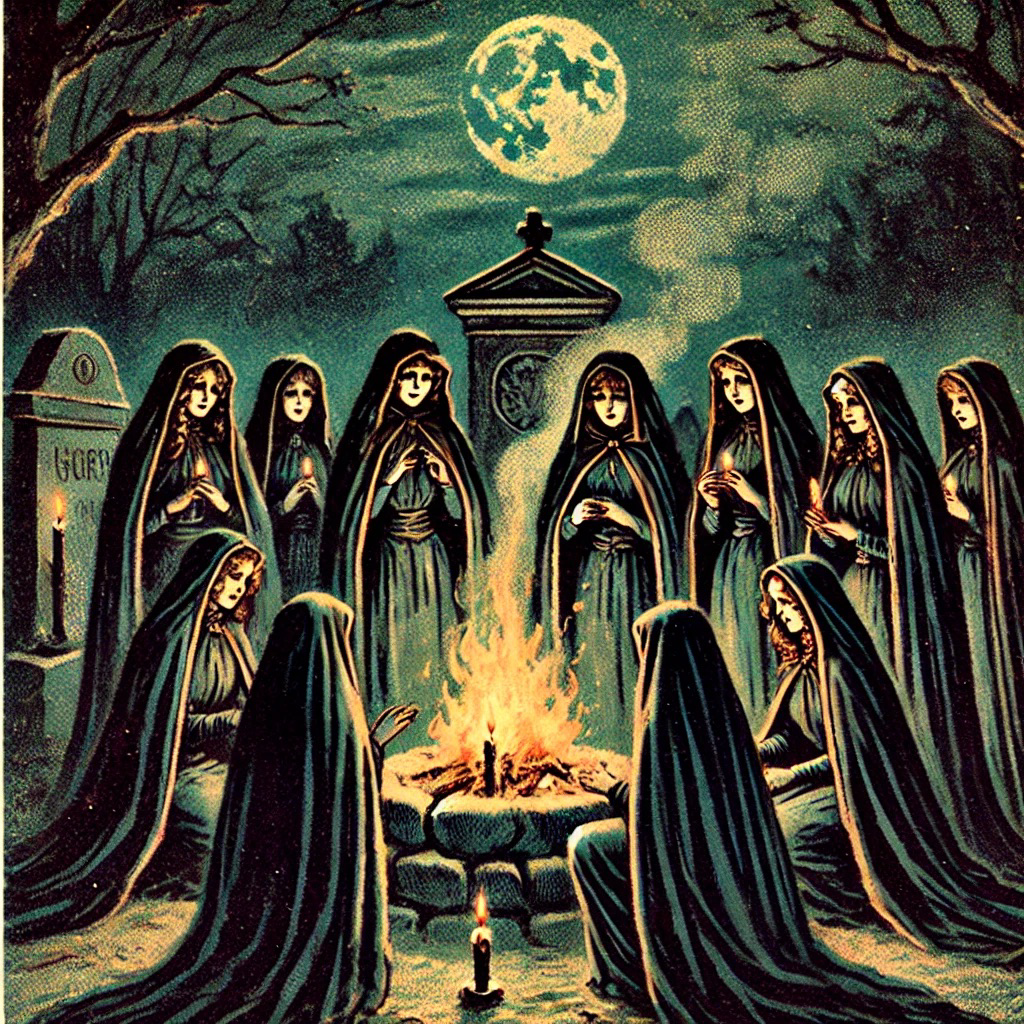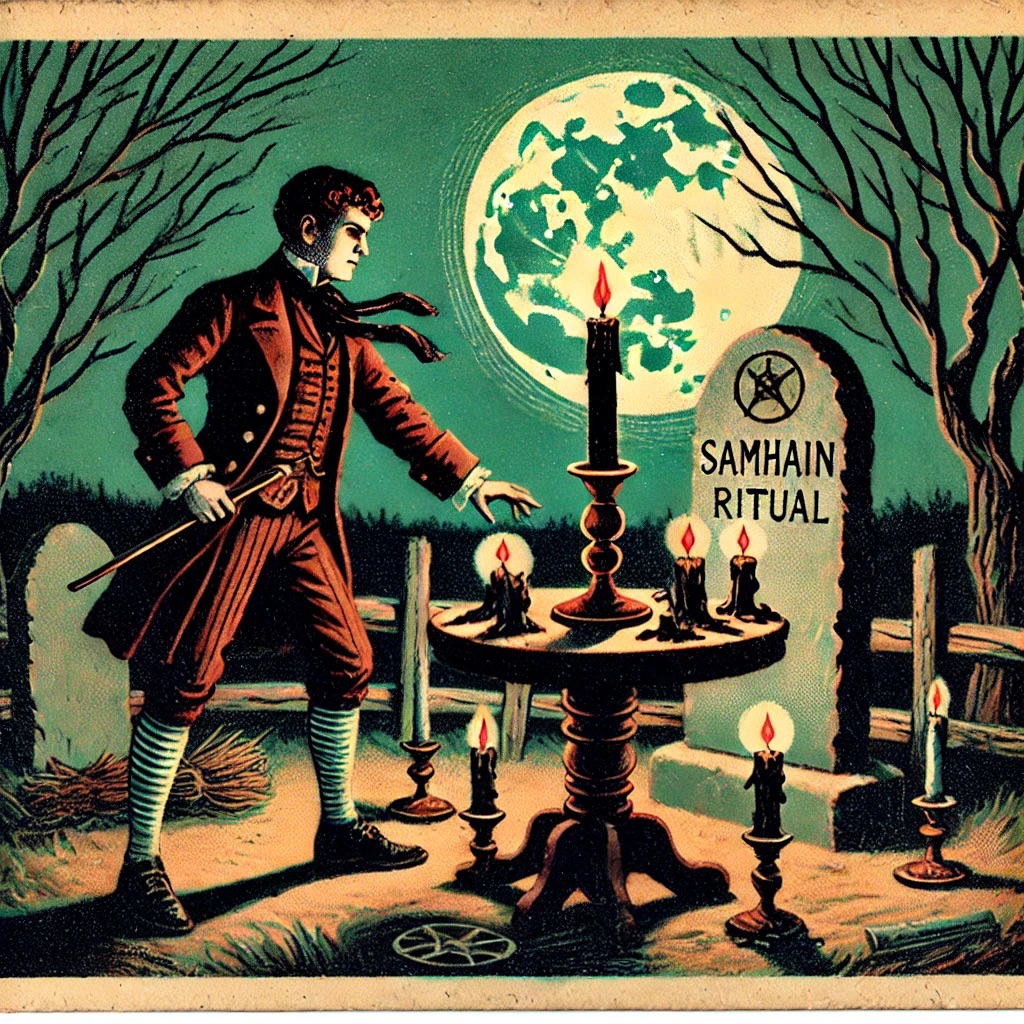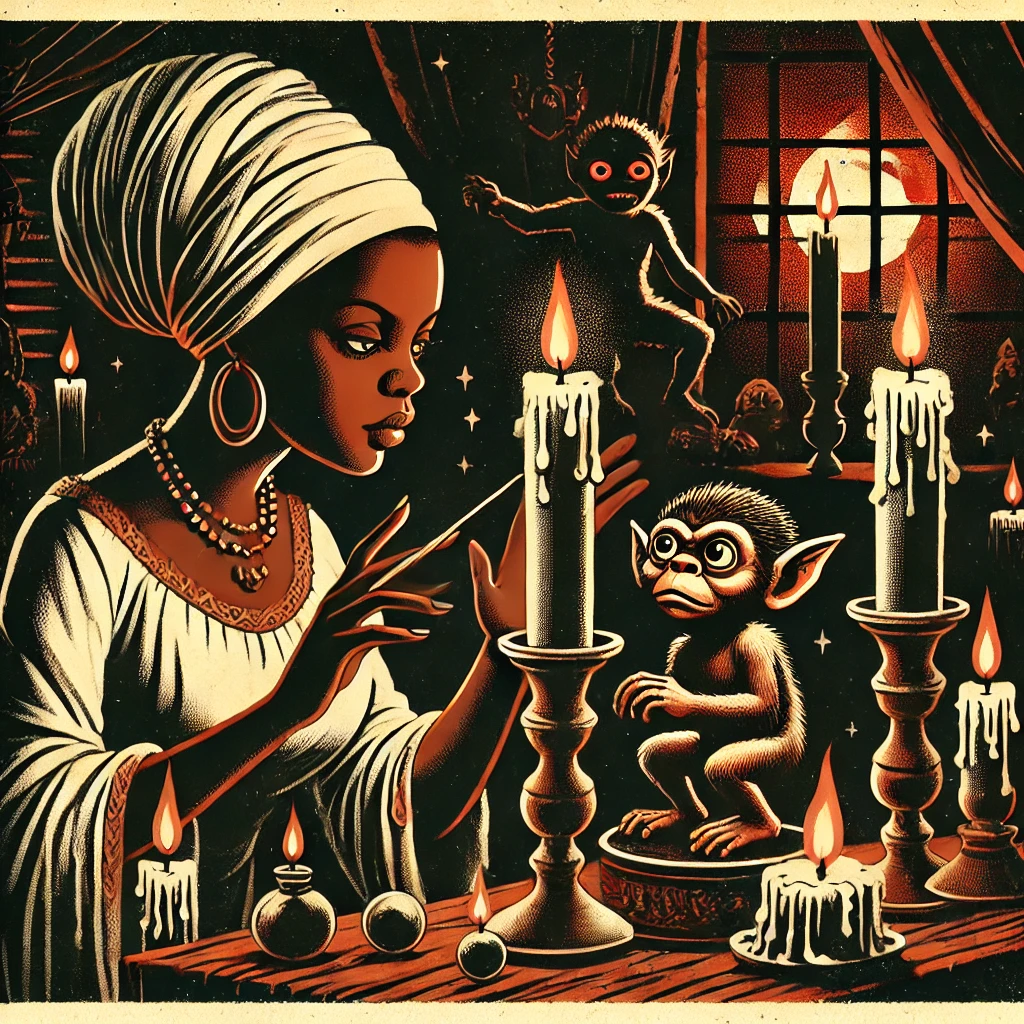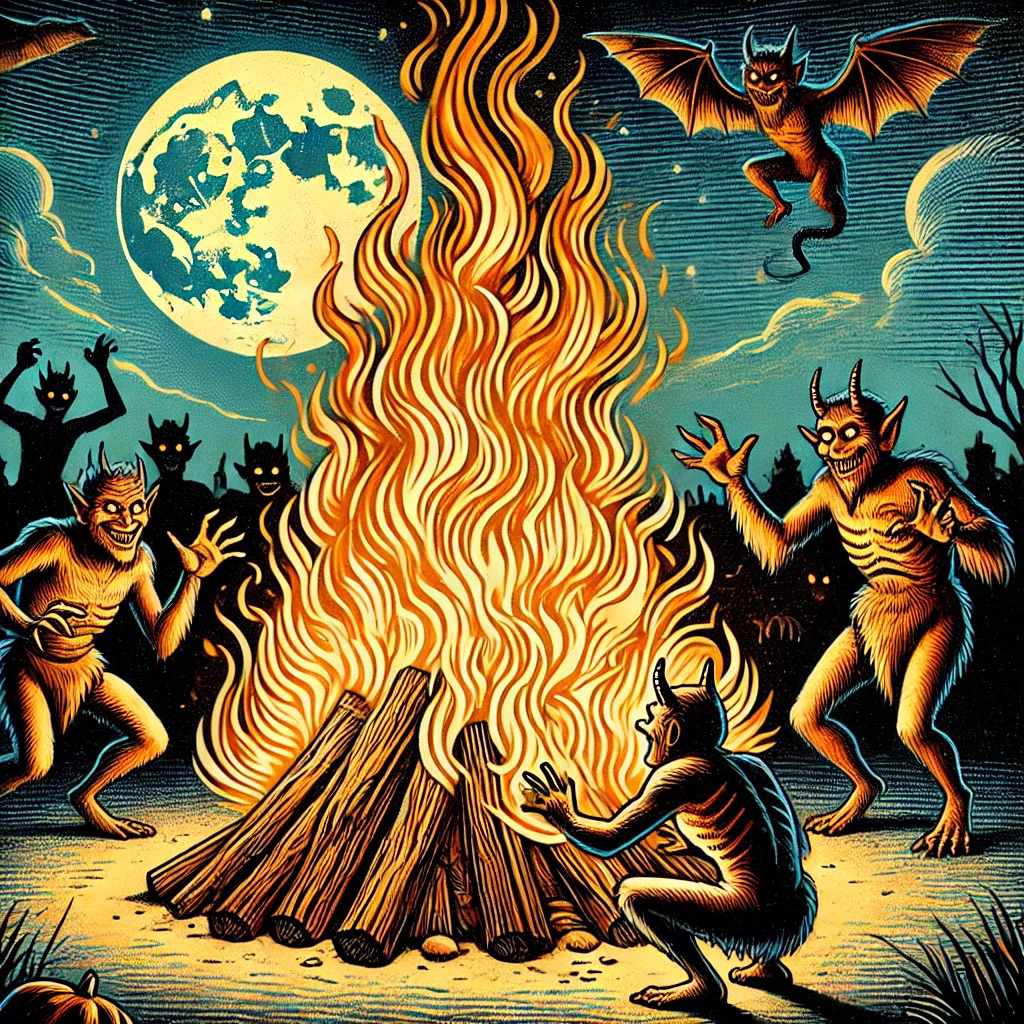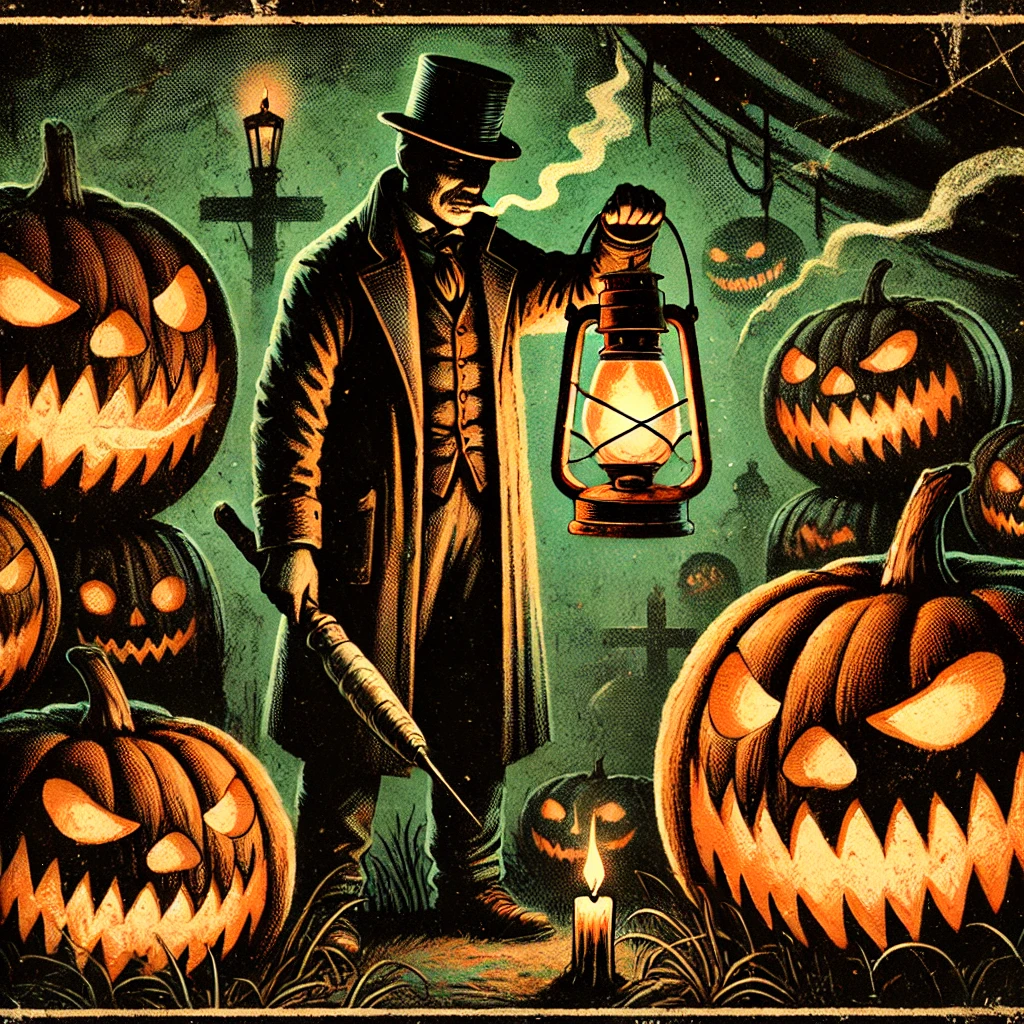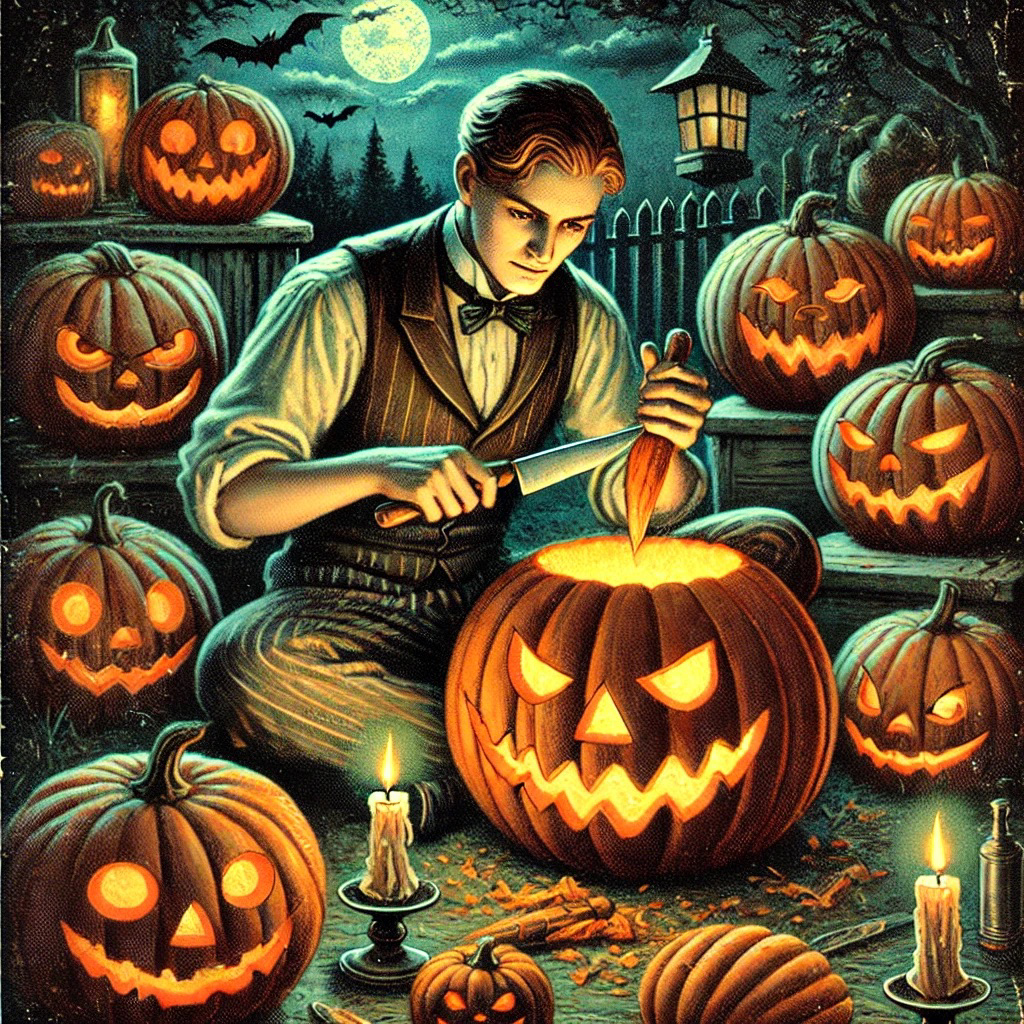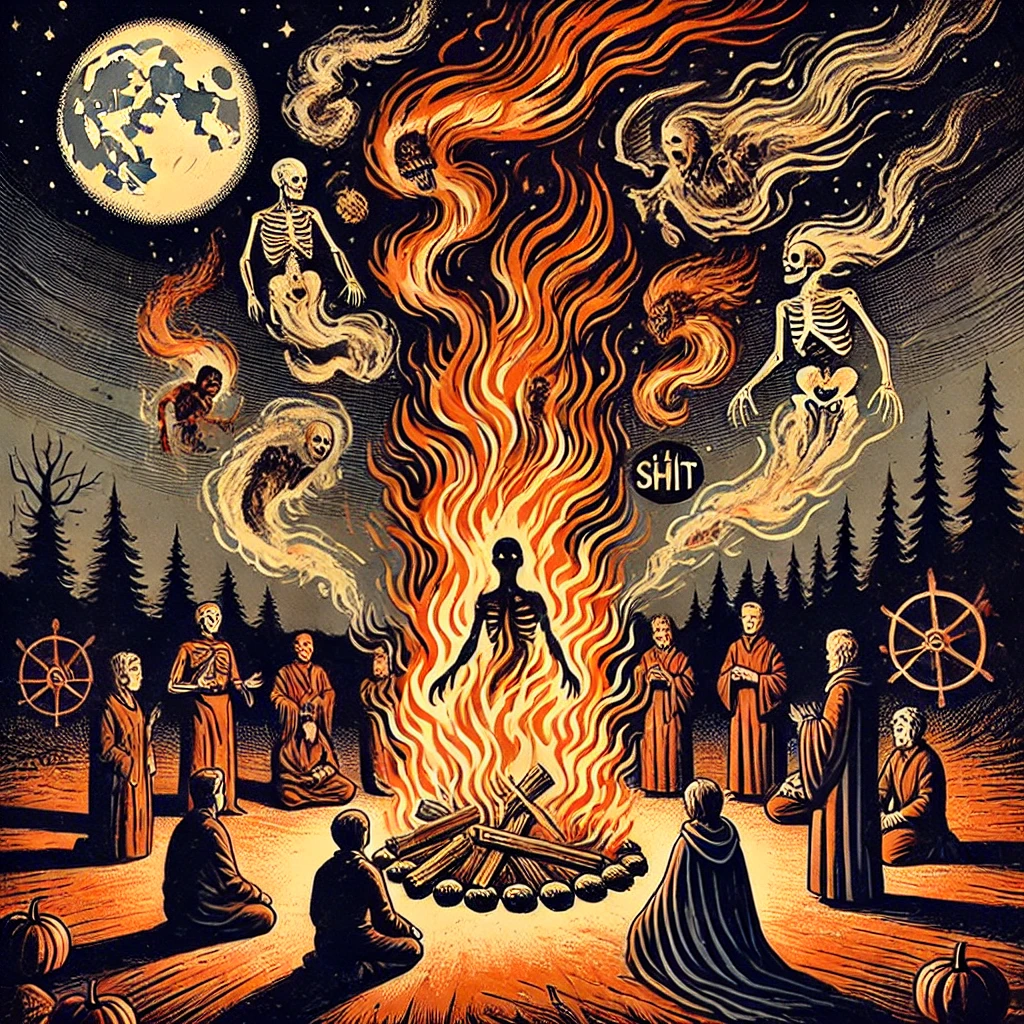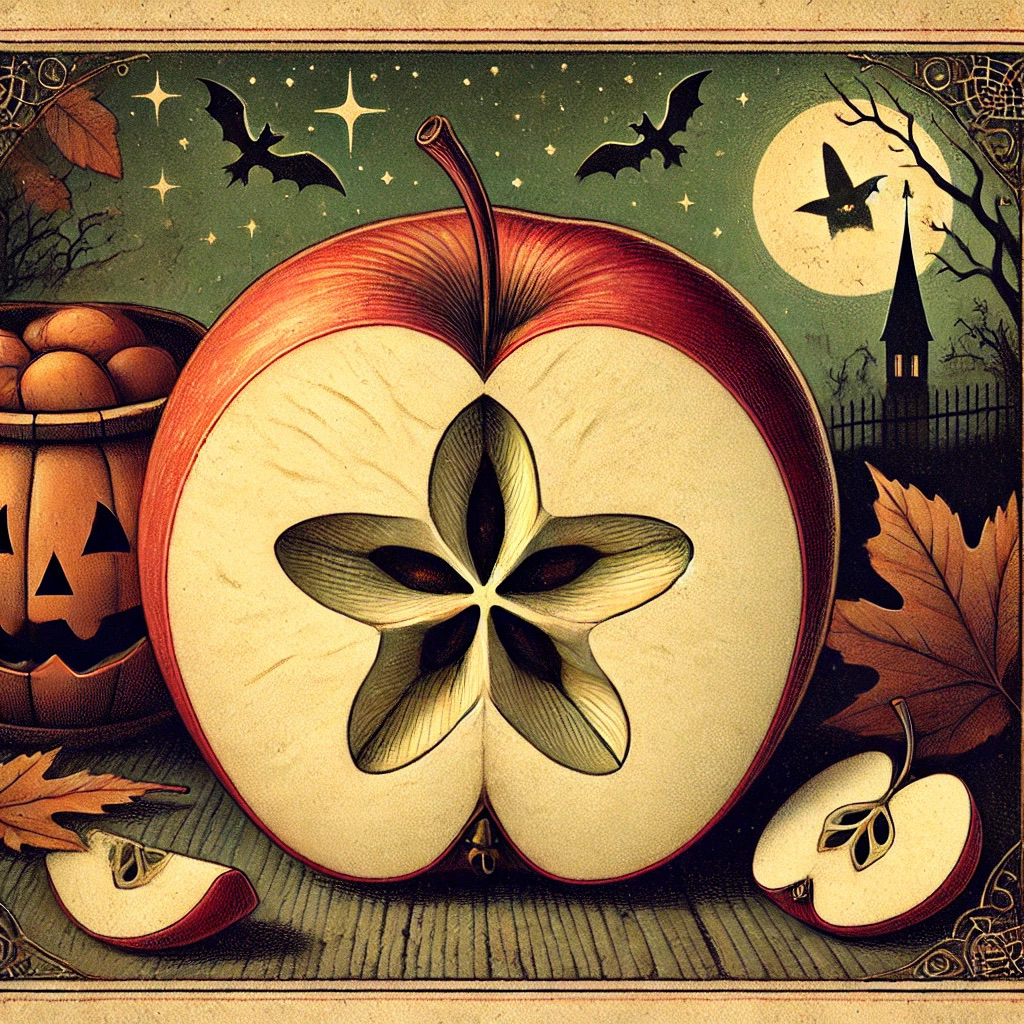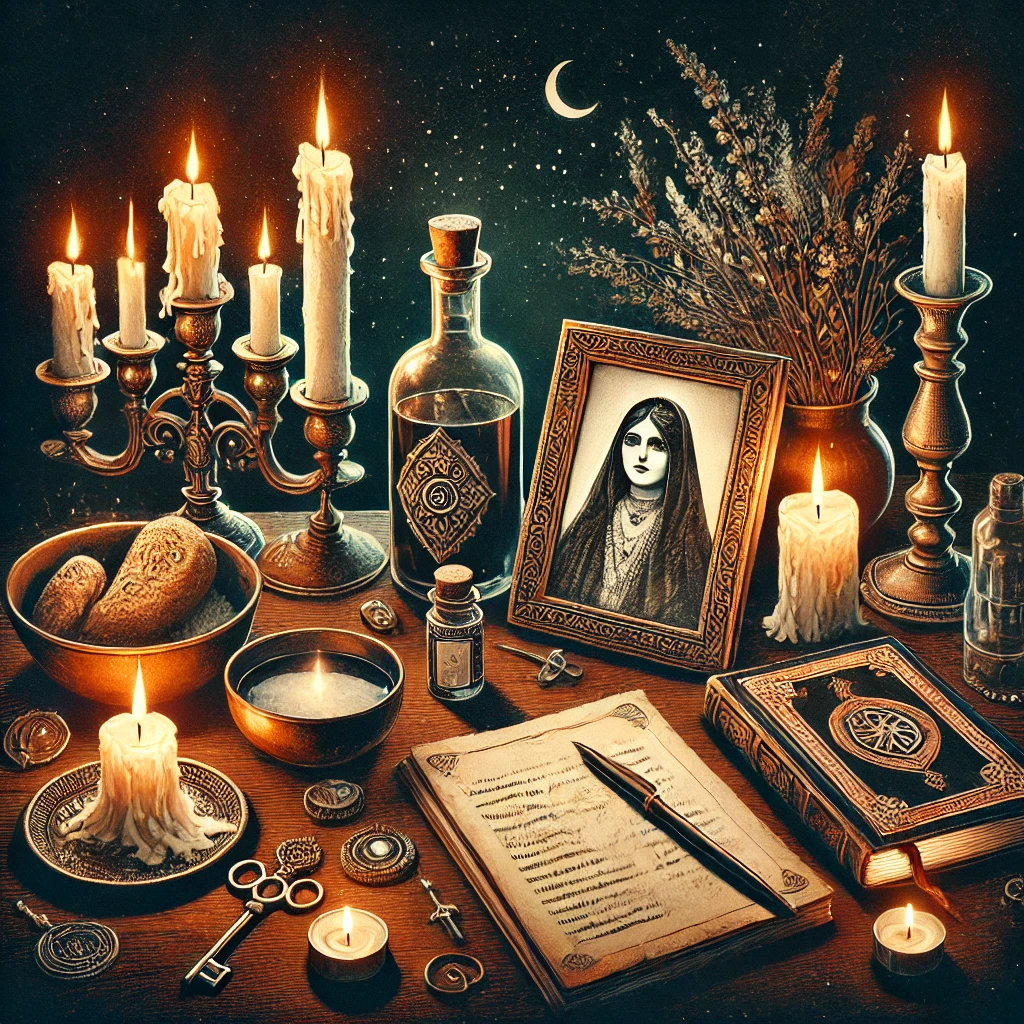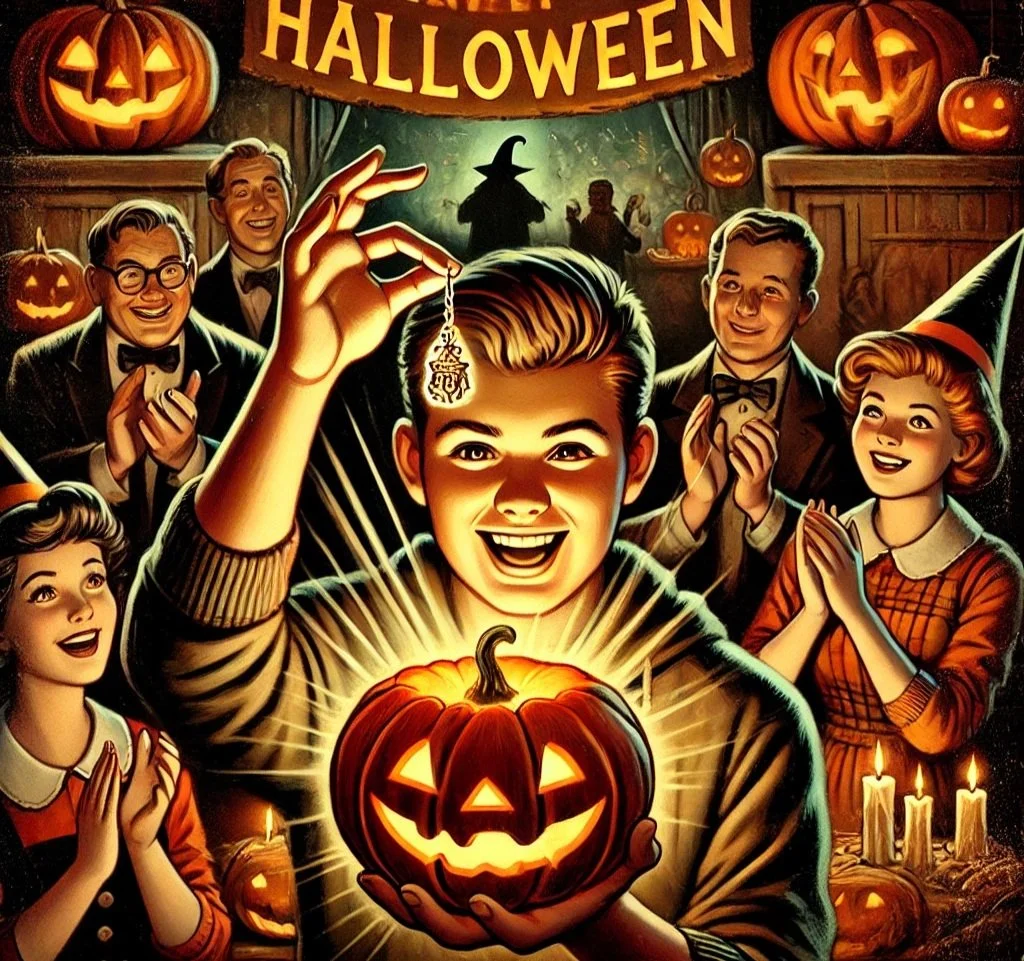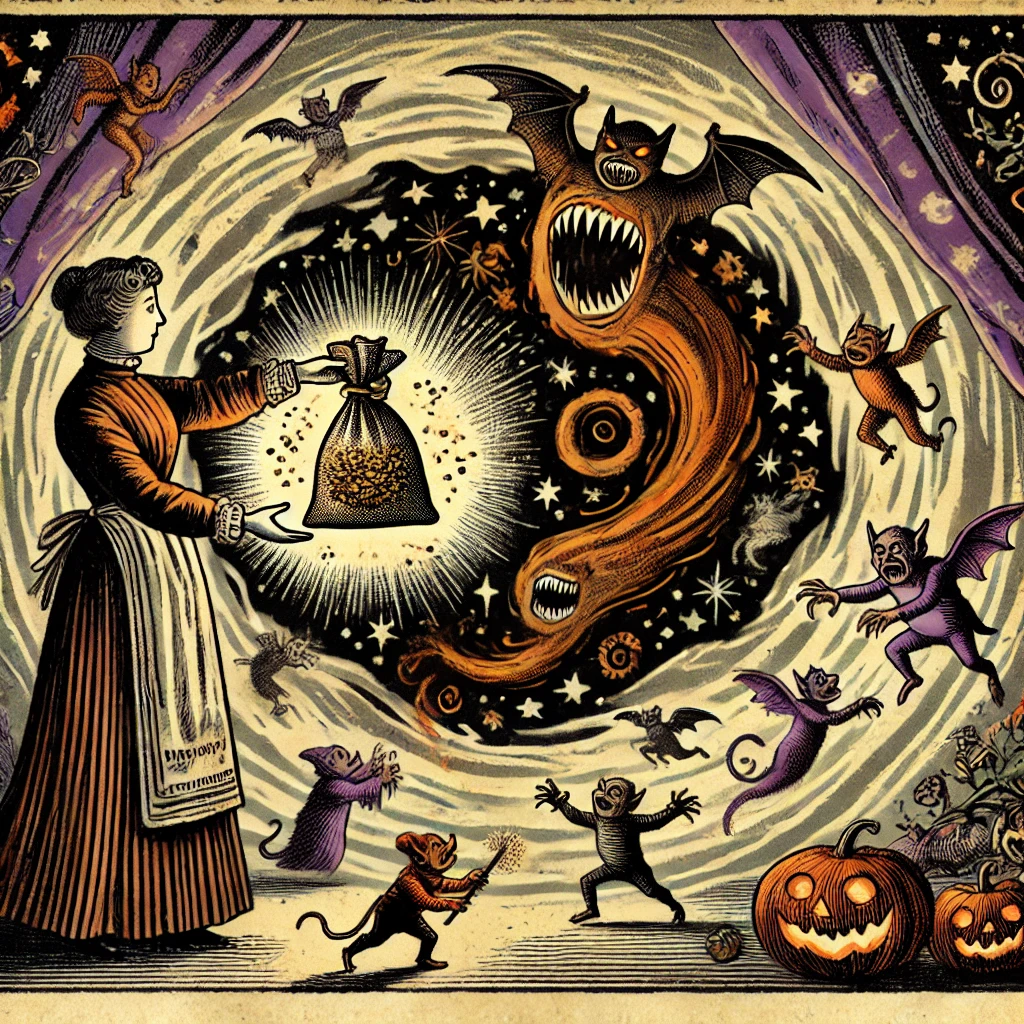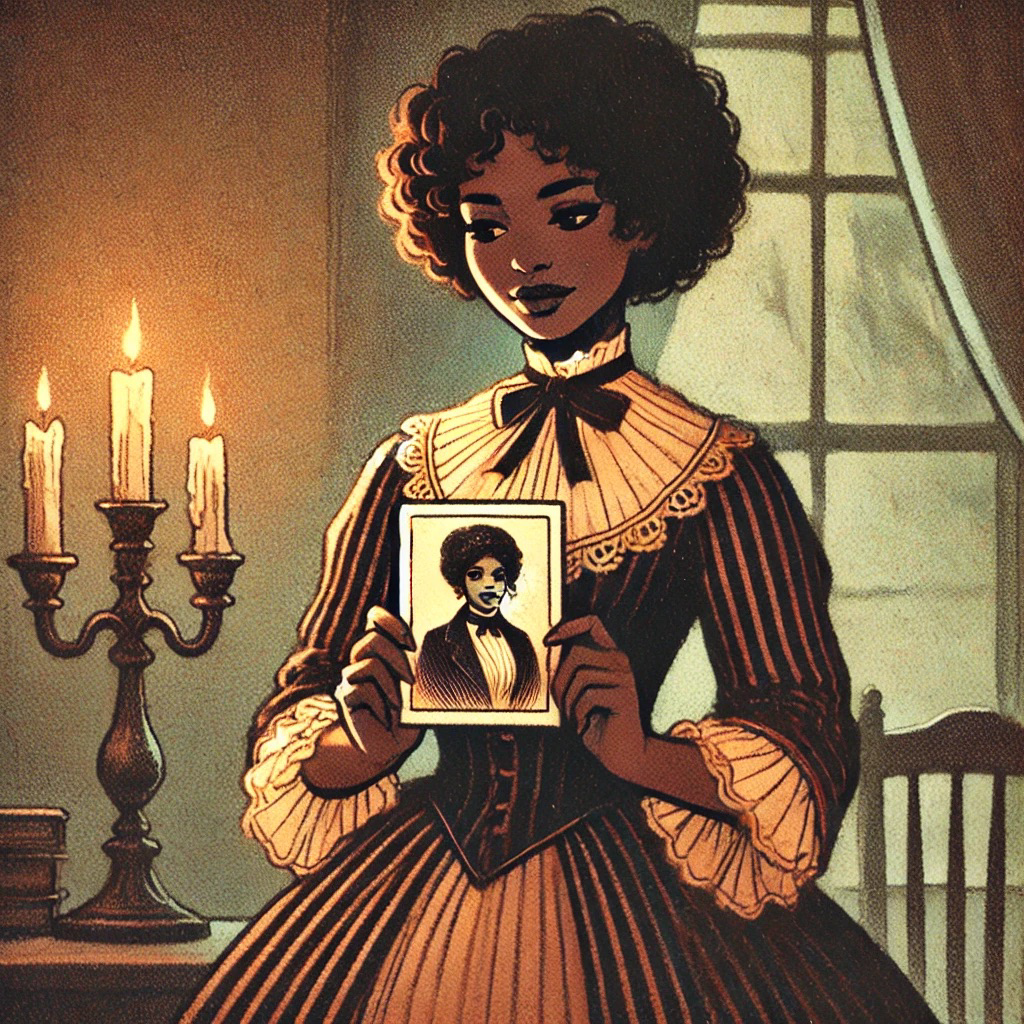This Wiccan holiday marks the thinning of the veil, when divination, honoring the dead and embracing the darkness come together.
The air is cool, almost biting, as you walk through a darkened forest. The leaves, once ablaze in fiery autumn colors, have now turned brown and brittle, carpeting the forest floor with a soft, crackling layer. The moon, full and heavy in the sky, bathes the landscape in a silver glow, casting long, eerie shadows among the trees. Somewhere in the distance, you hear the low hoot of an owl and the rustling of creatures unseen.
It’s spooky Samhain — the Wiccan festival that follows Mabon, marking the end of the harvest season and the beginning of winter. It’s a time when the veil between the living and the dead is at its thinnest, a liminal period when spirits walk among us and the mysteries of the afterlife feel closer than ever. For Wiccans, Samhain is the witches’ New Year, a night to honor ancestors, reflect on the cycle of life and death, and embrace the darkness that comes with the closing of the year.
Samhain (pronounced Sow-en) isn’t just a time of endings, but also of new beginnings — where the seeds of the future are planted in the fertile darkness. As the wheel of the year turns, Samhain invites you to look inward, to confront the shadows within and without, and to prepare for the quiet, introspective months ahead.
So whether you’re lighting candles to guide the spirits home, carving pumpkins to ward off malevolent forces, or simply sitting by a fire with a cup of mulled cider, this guide will walk you through the history, the rituals and the ways you can celebrate Samhain in a way that’s meaningful, magical and deeply connected to the turning of the seasons.
Samhain has profoundly influenced the history of Halloween. Many of the customs we associate with Halloween trace their origins back to the ancient rites of the Celtic holiday.
The Myth of Samhain
Long before Samhain became a part of Wiccan tradition, it was celebrated by the ancient Celts as the festival of the dead. According to legend, it was on Samhain night that the great hero, Cú Chulainn, faced his final battle. Wounded and weakened, he tied himself to a standing stone so he could die on his feet, sword in hand, defying death itself.
As Cú Chulainn’s life ebbed away, the Morrígan, the great Celtic goddess of war and fate, appeared before him in the form of a crow, her dark wings fluttering as she perched on his shoulder. It was said that the Morrígan would come to those who were destined to die, and her presence signaled the hero’s inevitable end. But even as his strength failed him, Cú Chulainn refused to fall, his spirit unbroken even in death.
Samhain, in this way, became a time to honor the dead and to remember the heroes who had passed on, their spirits crossing the thin veil to join the ancestors.
It was also a night of divination, where the future could be glimpsed through the mists of the otherworld, and the Morrígan herself might appear to those brave enough to seek her out.
As the Celts gathered around their fires, they told stories of the old gods and heroes, lighting candles and making offerings to ensure that the spirits of their ancestors would find their way home. The fires burned bright through the night, keeping the darkness at bay and offering protection from the malevolent spirits that roamed the land.
Symbols and Correspondences of Samhain
Samhain is rich with symbols that reflect the themes of death, rebirth and the thinning of the veil between worlds. From the glowing jack-o'-lantern to the sacred bonfire, these symbols are more than just decorations — they carry deep meaning, connecting us to the cycles of life, death and renewal.
Jack-o'-Lanterns: Guiding Spirits and Warding Off Evil
The tradition of carving jack-o'-lanterns dates back to ancient Celtic practices of creating turnip lanterns to guide the spirits of the dead on Samhain night.
The flickering light inside was meant to represent the souls of the departed, while the carved faces served to ward off malevolent spirits that might wander too close.
As the custom crossed the Atlantic, pumpkins replaced turnips, and the jack-o’-lantern became a quintessential symbol of Halloween.
In your Samhain celebrations, consider carving a pumpkin with symbols that hold personal significance. Place it on your doorstep or windowsill as a beacon for the spirits of loved ones and as a protective charm against darker forces.
The Bonfire: A Beacon of Protection and Renewal
Bonfires have long been a part of Samhain celebrations, serving as a powerful symbol of protection and purification. In ancient times, people would gather around these fires, tossing in offerings of food, herbs and other items to ensure a bountiful year to come. The bonfire’s light was believed to ward off evil spirits and guide the souls of the departed back to the otherworld.
If you’re able, gather around a fire on Samhain night — whether it’s a roaring outdoor bonfire or a simple candle lit indoors. Use this time to meditate on the cycles of life and death, and to release any fears or anxieties into the flames, allowing the fire’s transformative power to cleanse and renew your spirit.
Apples: The Fruit of the Otherworld
In Celtic mythology, apples were considered sacred, often associated with the otherworld and the land of the dead. It was believed that the fruit could grant access to the mysteries of the afterlife, and on Samhain, apples were used in divination rites to glimpse into the future.
To incorporate apples into your Samhain rituals, consider performing a simple divination by slicing an apple crosswise to reveal the hidden star within. Eat the apple mindfully, asking for insight or guidance, and let the seeds be a reminder of the potential for new beginnings even in the darkest times.
SkullS and Bones: Symbols of Mortality
Skulls and bones are powerful symbols of Samhain, representing mortality and the thin line between the living and the dead. They remind us of the impermanence of life and the inevitability of death, urging us to honor those who have passed and to reflect on our own journeys.
Decorate your altar with small skulls or bones (real or symbolic) to connect with the energies of the season. These symbols can serve as a focal point for meditation, helping you to confront and accept the natural cycles of life and death.
A Samhain Ritual: Honoring the Dead and Welcoming the New Year
Samhain is a time for deep reflection, honoring those who have passed, and preparing for the new beginnings that lie ahead. This simple ritual is designed to help you connect with the energies of the season and the spirits of your ancestors.
What you’ll need
A black candle (for protection and the dark half of the year)
A white candle (for purification and the light to come)
A photo or memento of a loved one who has passed
A small bowl of water (symbolizing the veil between worlds)
An offering (such as bread, wine or herbs)
A journal and pen for reflection
1. Set the space.
Begin by finding a quiet place where you won’t be disturbed. Cast a ritual circle if you want.
Arrange your candles, photo or memento, and offering on a small table or altar. Light the black candle, focusing on the protection and guidance it brings as the dark half of the year begins. As you light the candle, say:
“I light this flame to guide me through the darkness. May it protect me and illuminate the path ahead.”
2. Honor your ancestors.
Hold the photo or memento of your loved one in your hands. Close your eyes and take a few deep breaths, visualizing the face or presence of this person. Speak to them as though they are with you, expressing gratitude for their influence in your life and asking for their guidance in the coming year. Place the photo or memento next to the black candle.
3. Reflect on the year.
Take a moment to think about the past year — the lessons learned, the challenges faced and the growth achieved. Write down your reflections in your journal, allowing your thoughts to flow freely. This is also a time to acknowledge what you are ready to release as the year ends.
4. Light the white candle.
Light the white candle, symbolizing the new light that will eventually return. As you do, say:
“As the wheel turns, I welcome the light that will come after the darkness. I honor the past, embrace the present and look forward to the future.”
5. Make an offering.
Pour a small amount of water into the bowl, symbolizing the thinning veil between the worlds. Take your offering and place it in front of the candles, saying:
“I give thanks for the blessings of the past year and offer this gift in gratitude. May it nourish the spirits of those who have gone before and guide me through the year to come.”
6. Close the ritual.
Spend a few moments in quiet reflection, feeling the connection between the past, present and future. When you’re ready, blow out the candles, starting with the black one and then the white. Thank the spirits and energies that have been present during your ritual.
You may wish to leave the bowl of water and the offering on your altar overnight or dispose of them outside, returning them to the earth.
Other Ritual Activities for Samhain
Ancestral Altar
Take a cue from the Day of the Dead: One of the most meaningful ways to celebrate Samhain is by creating an altar dedicated to your ancestors. This sacred space can be adorned with photos, mementos, candles, and offerings of food and drink. Light a candle for each ancestor you wish to honor, and spend time in quiet reflection, speaking to them as though they are present.
As you sit before the altar, say:
“On this night, as the veil grows thin, I honor the spirits of those who have come before me. I give thanks for their wisdom, their love, and their guidance. May they find peace and may their light continue to guide me.”
Silent Supper
A silent supper, or dumb supper, is a traditional Samhain ritual where a meal is prepared and eaten in complete silence to honor the dead. The table is set with an extra place for the spirits of loved ones who have passed, inviting them to join in the feast. The silence is maintained to show respect and to create a space for communication with the otherworld.
Prepare a meal with seasonal ingredients, such as root vegetables, apples and hearty grains. As you eat, reflect on the lives of those who have gone before you, and listen for any messages or insights that may come to you in the stillness.
Scrying and Divination
Samhain is an ideal time for scrying, a form of divination that involves gazing into a reflective surface to receive visions or insights. Traditionally, a black mirror, a bowl of water, tarot cards or a crystal ball might be used for this purpose.
Apple Peel Divination: A Simple Samhain Rite
Apples, symbols of magic and the otherworld, lend themselves perfectly to a straightforward divination practice during Samhain.
To begin, find a quiet space and hold a fresh apple while focusing on a question or intention.
Slowly peel the apple in one continuous strip, keeping your mind centered on the guidance you seek.
Once peeled, toss the strip over your left shoulder and observe the shape it forms on the ground. The peel may reveal a letter, symbol or shape that offers insight into your question.
Finally, record your impressions and consider how this message might guide you in the coming months. The apple peel divination is a traditional, easy and meaningful way to connect with the energies of Samhain.
Feasting: A Harvest of Flavor
As the final harvest festival, Samhain is the perfect time to celebrate with a feast that honors the season’s bounty and the transition into the darker half of the year. Traditional Samhain foods are rich and hearty, and often infused with the warmth of spices to chase away the chill of autumn nights.
Root vegetables like potatoes, carrots and turnips take center stage, often roasted or simmered into comforting stews. Apples, ever the symbol of wisdom and connection to the otherworld, are used in everything from pies to ciders, adding a sweet, crisp note to the table. You might also enjoy hearty breads, pumpkin dishes, and anything spiced with cinnamon, cloves or nutmeg — all of which evoke the essence of the season.
For a truly magical touch, consider baking a special Samhain loaf or cake, embedding a small charm or token inside. As you share the cake with loved ones, the person who finds the charm may receive a special blessing or message for the year ahead. This tradition not only adds an element of fun to your feast but also connects you to the ancient customs of divination and celebration that have long been part of Samhain.
Whether you’re cooking for a crowd or enjoying a quiet meal alone, let your Samhain feast be a time of reflection and gratitude, a celebration of both the harvest and the mysteries of the season.
Samhain Crafts and Activities
Samhain offers a wealth of creative opportunities to engage with the season’s energy and themes. Here are some activities that you can incorporate into your celebrations:
Creating Spirit Dolls
Crafting spirit dolls is a traditional Samhain activity that allows you to create a tangible representation of your ancestors or spirit guides. Using natural materials like twigs, corn husks or fabric scraps, fashion a small doll that symbolizes a loved one or spiritual protector.
As you create your doll, focus on the qualities or energies you wish to honor or invite into your life. These spirit dolls can be placed on your altar or kept in a special place in your home as a way to stay connected to those who have passed or to receive guidance from the spirit world.
Bone Rattles
A bone rattle is a powerful tool for connecting with the spirit realm, and making your own can be a meaningful Samhain project. Collect small bones from ethically sourced materials (or substitute with sticks or shells) and attach them to a sturdy handle, such as a piece of driftwood or a carved stick. As you shake the rattle, the sound is said to call forth spirits and ancestors, making it a potent addition to your Samhain rituals or meditations.
Ancestor Story Stones
Gather a set of small, smooth stones and paint or draw symbols on them that represent stories, traits or memories of your ancestors. These could include simple images like a tree, a house or an object they were known for.
Use these stones in a storytelling ritual, where you draw a stone at random and share or reflect on the story or memory it represents. This activity not only honors your ancestors but also keeps their stories alive and connected to your present life.
Herbal Sachets for Protection
As the veil between worlds thins, creating herbal sachets for protection is a practical and magical way to safeguard your space. Combine herbs traditionally associated with protection, such as rosemary, sage and juniper, and place them in small fabric pouches. You can hang these sachets by your door, carry them with you, or place them under your pillow to ward off negative energies and invite peace into your home.
These activities are not only fun and creative but also deeply connected to the themes of Samhain, offering ways to honor the past, protect the present and prepare for the future.
Samhain: Embracing the Shadows and Honoring the Past
As the wheel of the year turns, Samhain invites us to pause, reflect and connect with the mysteries of life, death and the unseen. It’s a time to honor our ancestors, embrace the darker aspects of our existence, and prepare for the introspective journey through the winter months.
Whether through ritual, feasting or creative activities, Samhain offers a space to engage with the deeper cycles of life and to find meaning in both the endings and the beginnings that this season represents. As you light your candles, prepare your offerings and set your intentions, remember that Samhain isn’t just about looking back at what has passed, but also about planting the seeds of what is yet to come.
May your Samhain be filled with the magic of the season, the warmth of remembered love and the quiet anticipation of the new year ahead. –Wally

